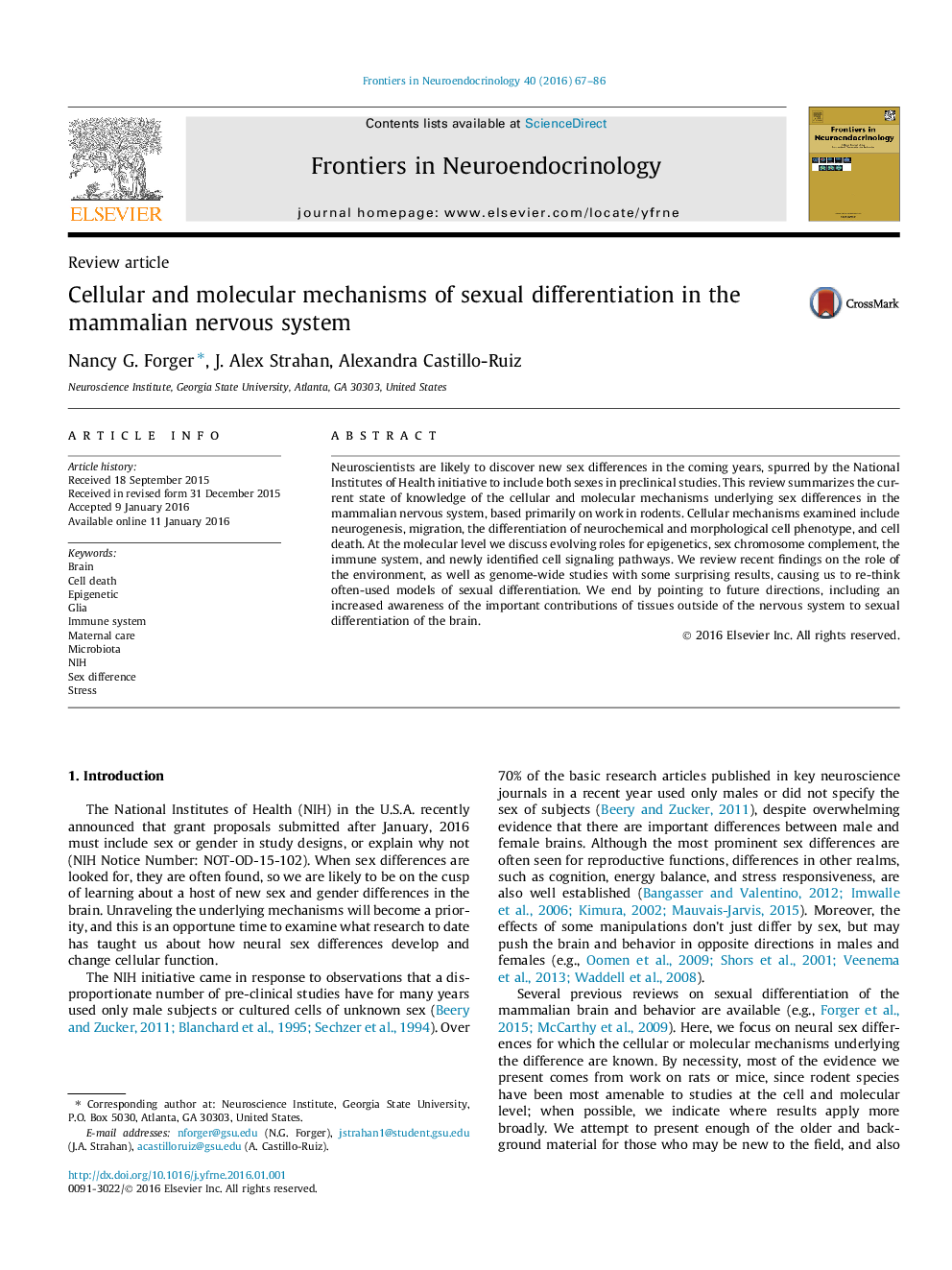| Article ID | Journal | Published Year | Pages | File Type |
|---|---|---|---|---|
| 5900605 | Frontiers in Neuroendocrinology | 2016 | 20 Pages |
Abstract
Neuroscientists are likely to discover new sex differences in the coming years, spurred by the National Institutes of Health initiative to include both sexes in preclinical studies. This review summarizes the current state of knowledge of the cellular and molecular mechanisms underlying sex differences in the mammalian nervous system, based primarily on work in rodents. Cellular mechanisms examined include neurogenesis, migration, the differentiation of neurochemical and morphological cell phenotype, and cell death. At the molecular level we discuss evolving roles for epigenetics, sex chromosome complement, the immune system, and newly identified cell signaling pathways. We review recent findings on the role of the environment, as well as genome-wide studies with some surprising results, causing us to re-think often-used models of sexual differentiation. We end by pointing to future directions, including an increased awareness of the important contributions of tissues outside of the nervous system to sexual differentiation of the brain.
Related Topics
Life Sciences
Biochemistry, Genetics and Molecular Biology
Endocrinology
Authors
Nancy G. Forger, J. Alex Strahan, Alexandra Castillo-Ruiz,
